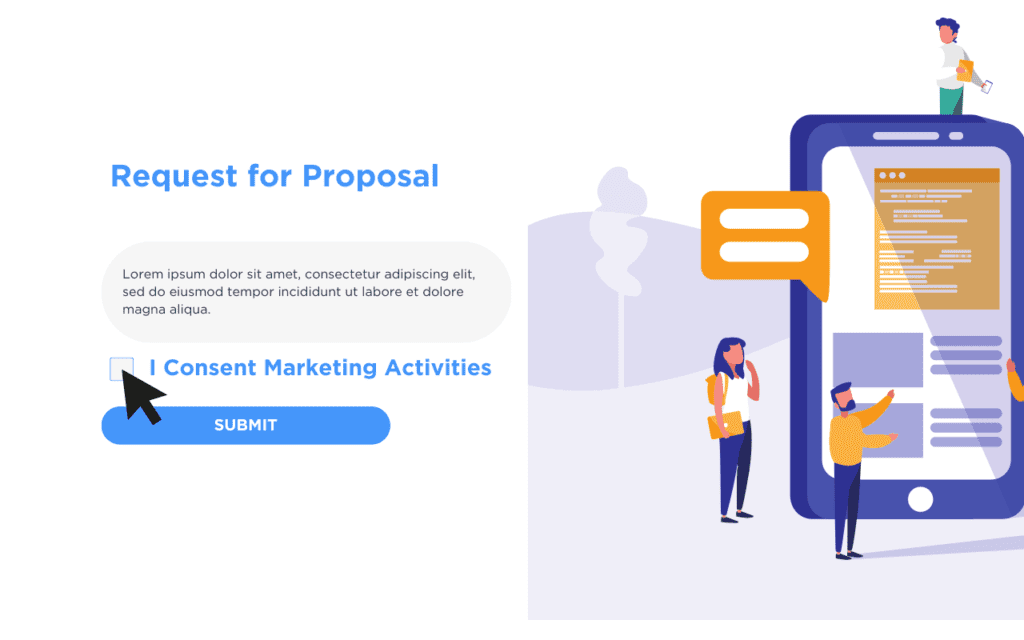Your cart is currently empty!
What Are Marketing Consents and What are the Best Practices in Collecting Them?

Today, data collection is an integral part of marketing strategies. However, with increased privacy regulations and user concerns about data privacy, obtaining valid marketing consents has become crucial for businesses. In this article, we will delve into the concept of marketing consents, including what it is, why it matters, and best practices for obtaining and managing marketing consents in compliance with privacy regulations.
What is Marketing Consent?
Marketing consent refers to the explicit permission obtained from individuals to collect and use their personal data for marketing purposes. Personal data includes any information that can identify an individual, such as names, email addresses, phone numbers, and browsing behavior. Marketing consent is a key element of data protection and privacy regulations, such as the General Data Protection Regulation (GDPR) in Europe and the California Consumer Privacy Act (CCPA) in the United States.
Importance of Marketing Consent
Obtaining valid marketing consent is essential for businesses to ensure they are collecting and using personal data in compliance with privacy regulations. It helps build trust with users by showing transparency and respect for their privacy rights. Marketing consent also helps businesses to establish a legal basis for processing personal data, which is a requirement under many privacy regulations. Failure to obtain valid marketing consent can result in severe fines, legal liabilities, and damage to a company’s reputation.
Compliance Risks in Marketing Consent
There are several compliance risks associated with marketing consent. These include obtaining consent without proper transparency, relying on pre-ticked boxes or opt-out mechanisms, collecting data from minors without appropriate consent, and using personal data for purposes not covered by the consent. Non-compliance with privacy regulations can result in legal penalties, fines, and reputational damage.
Best Practices for Obtaining Marketing Consent
To mitigate privacy compliance risks, businesses should follow best practices for obtaining marketing consent. These include:
Transparency
Provide clear and easy-to-understand information about the purpose of data collection, the types of data collected, and how it will be used. Avoid vague or misleading language and ensure that users are fully informed before providing consent.
Explicit Consent
Require users to actively opt-in to data collection, using methods such as checkboxes or confirmation buttons. Avoid pre-ticked boxes or implied consent, as they may not meet the requirements of privacy regulations.
Granularity
Offer users options to provide consent for different types of data collection and processing, allowing them to choose what they want to consent to and what they do not.
Revocable Consent
Allow users to withdraw their consent at any time and provide them with clear instructions on how to do so. Make it easy for users to update their preferences or withdraw consent as needed.
Minimize Data Collection
Collect only the data that is necessary for the intended purpose and avoid excessive or unnecessary data collection. Regularly review and update data collection practices to ensure compliance with privacy regulations.
In conclusion, obtaining valid marketing consent is critical for businesses engaged in digital marketing. It helps ensure compliance with privacy regulations, builds trust with users, and mitigates the risks associated with data collection. By following best practices for obtaining and managing marketing consent, businesses can establish a strong foundation for data protection and privacy compliance in their marketing strategies. Remember, transparency, explicit consent, granularity, revocable consent, and minimizing data collection are key principles to keep in mind when obtaining and managing marketing consent in today’s digital marketing landscape.
[smart_post_show id=”16588″]



